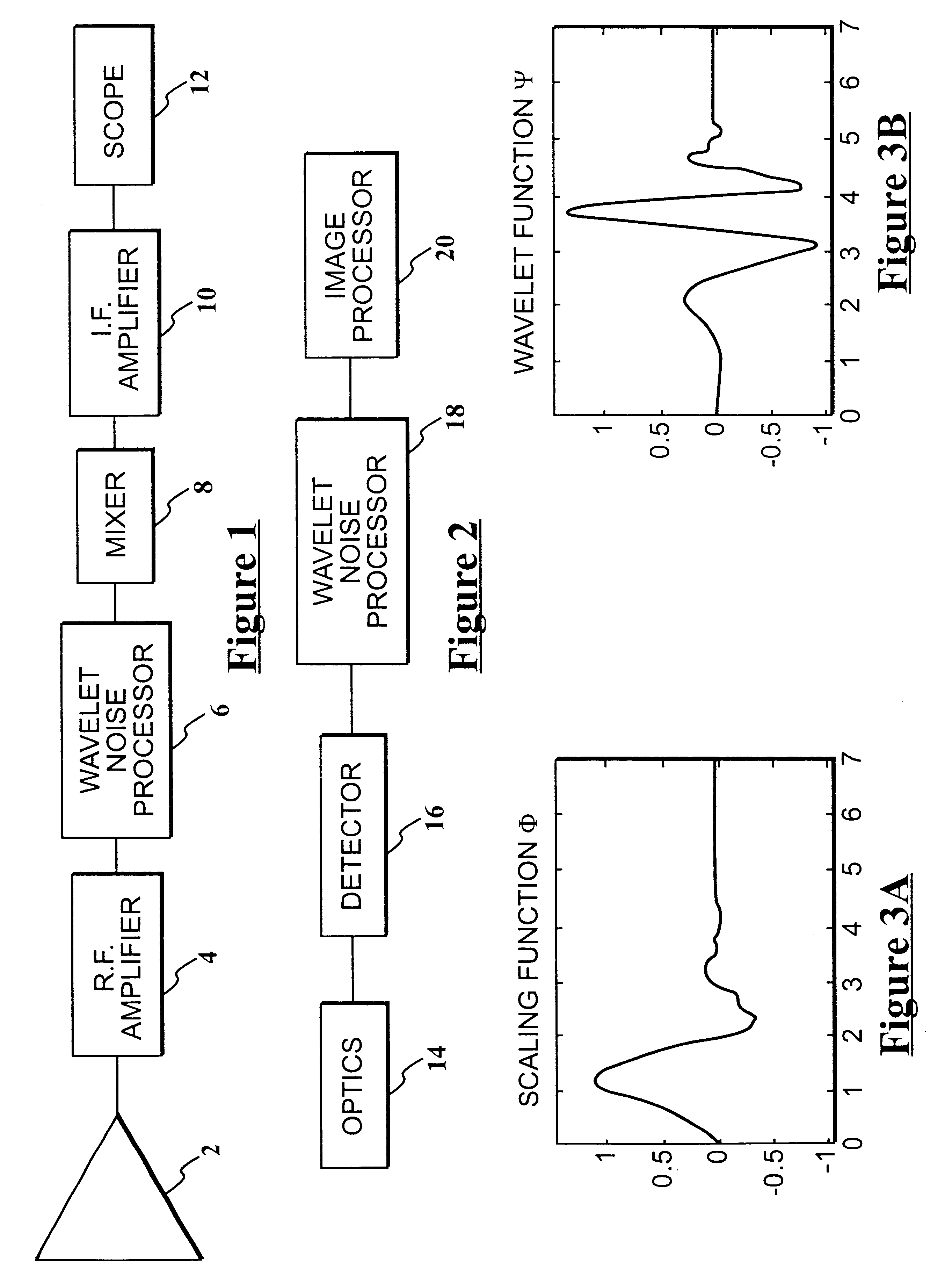Method and apparatus for improving signal to noise ratio using wavelet decomposition and frequency thresholding
a wavelet decomposition and frequency thresholding technology, applied in the field of methods and apparatus for improving the signal to noise ratio of information carrying signals, can solve the problems of limiting the effectiveness of each of these approaches, limiting the clarity of such approaches, and needing to develop noise estimates
- Summary
- Abstract
- Description
- Claims
- Application Information
AI Technical Summary
Benefits of technology
Problems solved by technology
Method used
Image
Examples
Embodiment Construction
FIGS. 1 and 2 are two examples of the many diverse types of systems which produce information carrying signals containing noise, to which the present invention pertains.
Referring to FIG. 1, a block diagram of a radar receiver is depicted. A radar transmitter (not shown) sends out pulses, and as the radar receiver antenna 2 is moved, reflected pulses are received coming from different directions, and are passed on to R.F. amplifier 4 for amplification. Since the received pulses are in the presence of noise, if the received pulses are too small, they will not be detected at the output, but will be lost in the noise. To improve the signal to noise ratio, wavelet noise processor 6, performing in accordance with the teachings of the present invention is provided. An information carrying signal with improved signal to noise ratio can then be passed to mixer 8 wherein it is converted to an intermediate frequency (I.F.), and from there to I.F. amplifier 10 and scope 12, where the improved s...
PUM
 Login to View More
Login to View More Abstract
Description
Claims
Application Information
 Login to View More
Login to View More - R&D
- Intellectual Property
- Life Sciences
- Materials
- Tech Scout
- Unparalleled Data Quality
- Higher Quality Content
- 60% Fewer Hallucinations
Browse by: Latest US Patents, China's latest patents, Technical Efficacy Thesaurus, Application Domain, Technology Topic, Popular Technical Reports.
© 2025 PatSnap. All rights reserved.Legal|Privacy policy|Modern Slavery Act Transparency Statement|Sitemap|About US| Contact US: help@patsnap.com



